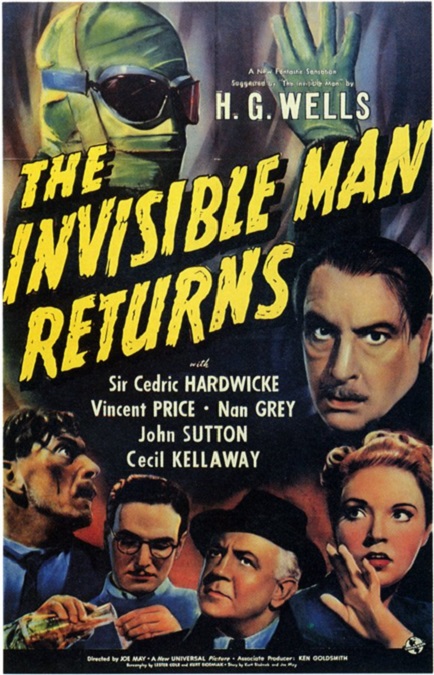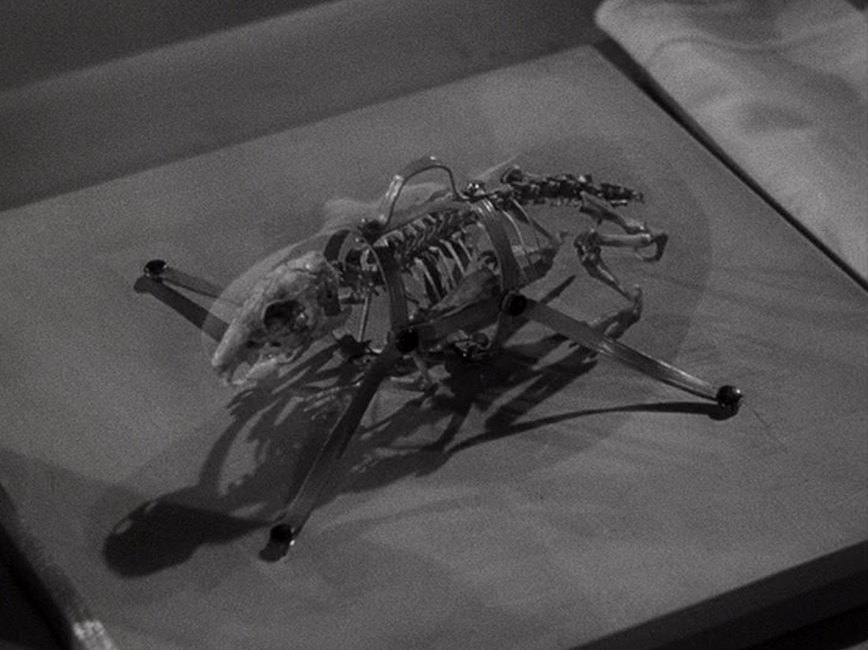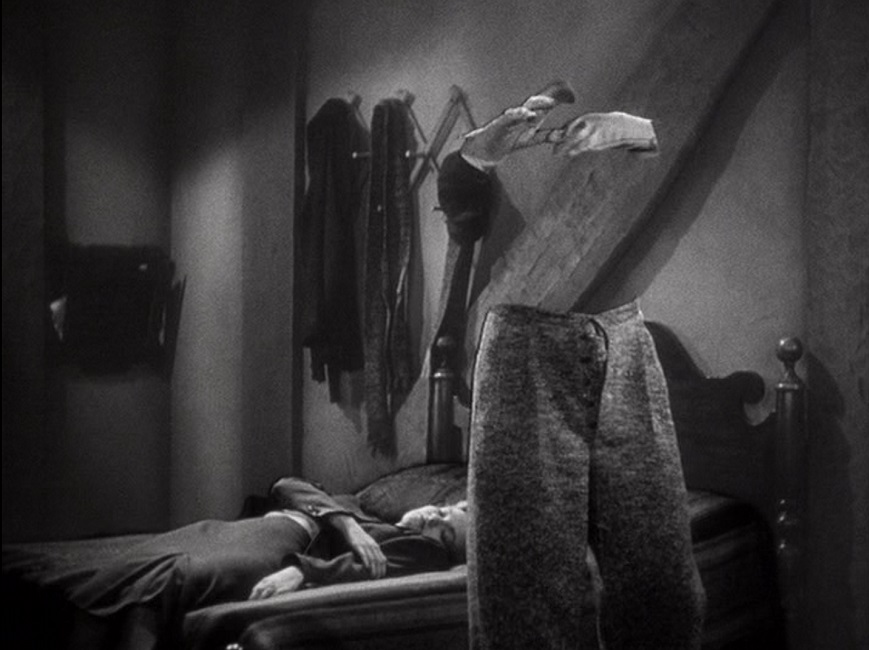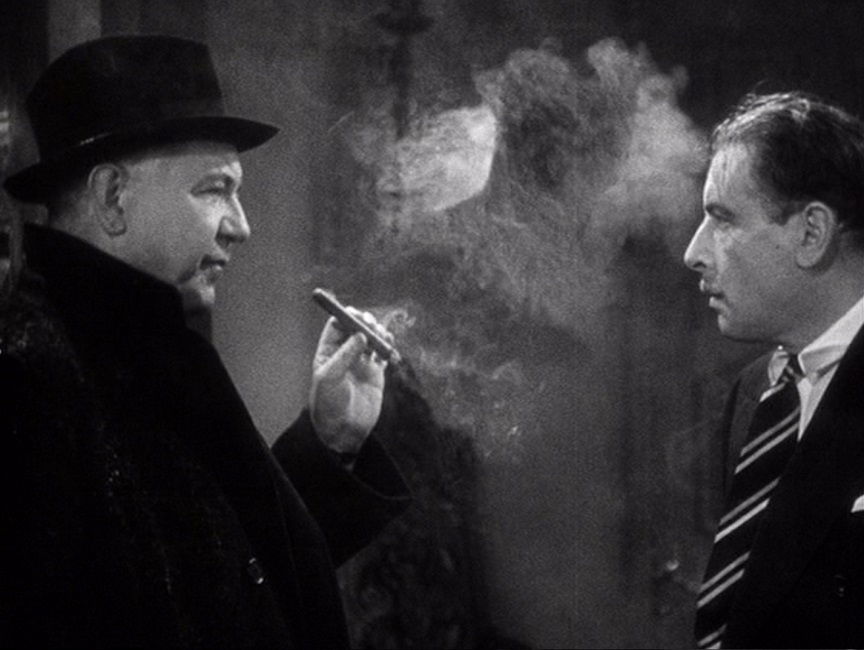



The Invisible Man Returns – 1940

This movie had some pretty spectacular and innovative special effects, especially since the film came out in 1940. Yes, it was a special effects driven film, but it was, unfortunately, on a much smaller scale than some of its competitors. When it comes down to it, I think Academy voters were just more dazzled by the bright Technicolor effects of other films. And really, there’s nothing wrong with that.
1940 was the first year that blue-screen technology was really used in film, though the process had actually been developed in the 1930s. However, not many people know that the effect that preceded blue-screen was called double exposure, in which two separate images were filmed on the same film.
In The Invisible Man Returns, Vincent Price wore a black mask or body suit so that the first exposure would appear to have nothing in black areas. Objects appeared to be moving by themselves. The second exposure was the background image which would show through the black areas of the first exposure. Pretty clever! There was one scene in particular, in which he removes the clothing from a scarecrow and puts them on. It was very well done, and unless you know what to watch for, it makes for an amazing effect. Notice how he grabs everything from behind. Otherwise parts of the clothing would have disappeared as he blocked them from the camera. It’s the kind of thing you don’t even notice when you are engrossed in the story.
There were a few shots that impressed me though they were pretty simple to accomplish. As an invisible guinea pig is injected with a serum to make it visible again, it comes back in stages. First we see its skeleton, and then his body. Making it appear in those two stages as opposed to just fading the creature back in one stage was smart. Then at the end of the movie, as Vincent Price undergoes the same process, with a revised serum, his veins and arteries become visible first, then his muscles, and then his skin.
Then there were the double exposed images that were wonderfully creepy, as the invisible man became barely visible when exposed to smoke or rain. Not the easiest effects, and so effective when done right. Director, Joe May, really did a fantastic job of staging the scenes perfectly to make use of these techniques.
However, there was one effect that I believe was ruined by the modern medium of my big-screen TV. There was a scene in which the invisible man is holding someone at gun-point. If I looked closely enough, I could see the wires that were holding the gun in place. There were two going up to the left, two going up to the right, and one going straight down to keep it all steady. But I’m sure the 1940 audiences didn’t have the chance to see the image that clearly. Still, well done!